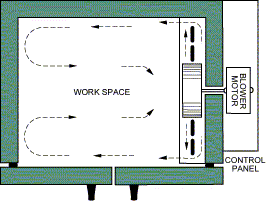The Verbatim 3000K omni-directional A19 98065 LED bulb is designed for standard 60W incandescent lamp retrofits. This lamp emits omni-directional light, so it can be used in environments where downward light output is required, like table and floor lamps. The 3000K warm white color temperature allows these bulbs to be used in a wide variety of residential and commercial applications. Verbatim omni-directional A-type bulbs can reduce energy consumption by more than 80% when compared to incandescent bulbs. These bulbs have an estimated lifetime of 40,000 hours, resulting in additional savings in maintenance and replacement costs. This Verbatim LED bulb is fully dimmable and backed by Verbatim’s 5-year limited warranty.
60 watt replacement LED Bulb. The 60 watt bulb is the most common bulb used.
Features:
- ENERGY STAR certified LED lamp
- Omni-directional light, ideal for A19 incandescent retrofits
- 60W incandescent replacement
- 3000K warm white light for residential and commercial environments
- Reduces energy consumption by over 80% when compared to a 60W incandescent bulb
- Compatible with most commercial dimmers, offering 10%-100% dimming performance.
- 40,000 hour lifetime reduces replacement and maintenance costs
- Environmentally-friendly product has no mercury or other hazardous materials and is RoHS compliant and UL listed.
- 5-year limited warranty
800 Lumens ~ 3000K color ~ ENERGY STAR ~ 12 watts ~ 40000 hours ~ 120 volts ~ E 26 base
Height 4.4 inches, Diameter 2.4 inches, 320 degree light angle
VERBATIM MODEL 98065 ~ VERBATIM PART NUMBER A19-L800-C30-O
LED History and Construction
The LED (Light Emitting Diode) was first discovered almost a century ago. In the early 1960’s the first practical devices were developed in the US. These were red LEDs used for indicators and alphanumeric displays. Since then blue, green and violet light emitting LEDs have been developed and research has concentrated on achieving lower costs with higher light output and efficiency.
In order to create the white light needed for general lighting the LEDs are surrounded by phosphor materials that transform the monochromatic light from a blue or near-UV LED to broad-spectrum white light. The development and sale of LED substrates, phosphors and encapsulants are a key focus for MCHC.
LED bulbs and lighting fixtures combine the methods and materials described above, electrical circuits to drive the LEDs, an optical lens to extract and focus the light, and heat sinks to maintain the LED’s optimum operating temperature.
Retrofit light bulbs are now available to replace most incandescent and CFL bulbs. The efficiency of an LED bulb is approximately five times that of a standard incandescent bulb, so that even though the initial cost of an LED lamp is higher than the incandescent type the additional cost is more than recovered through the lower energy usage and much longer life of the LED bulb. LED lamps are also environmentally friendly because they lessen the need for power generation and do not contain hazardous materials such as mercury.
Lighting in homes and businesses typically accounts for about 20% of electrical energy use. Conversion of incandescent lighting to LED-based lighting can have a major impact on national energy usage and individual carbon footprints.
866-360-9810


